Ranveer Singh: What the fuss over Bollywood star's nude photos says about India
- Published
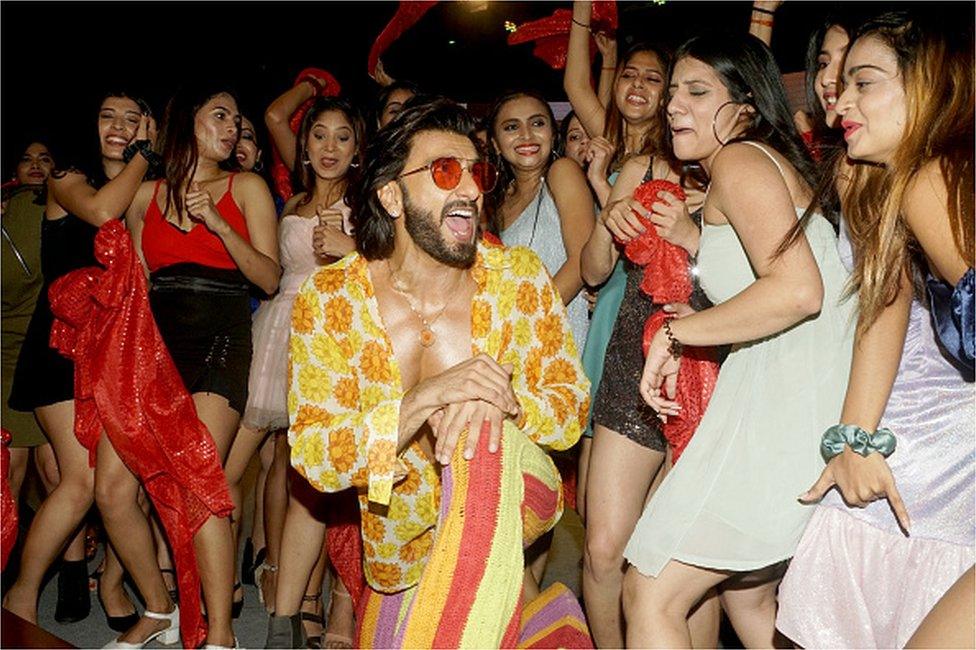
Ranveer Singh is an endlessly energetic and flamboyant star
"I can be naked in front of a thousand people… It's just that they get uncomfortable," Bollywood star Ranveer Singh told the Paper magazine recently.
That is exactly what happened when Singh recently posed nude, external for a photo spread in the same magazine. Social media exploded with both appreciation and indignation - but mostly the latter. Memes and jokes making fun of the pictures abounded; and many accused the actor of denigrating men. If this was not enough, a police complaint was lodged against him for "hurting the sentiments of women".
Singh is not your traditional male star. He's endlessly energetic, flamboyant and embraces a frothy fashion style - velvet pants, sequin turtlenecks, jewellery - that Vogue magazine calls a "positive nod to the non-binary fluidity that fashion today is embracing".
In other words, says Paper, Singh has "challenged practically every stereotype of masculinity in a still-traditionalist Indian society".
"He has an ideal kind of male body. But he dresses on the border of androgyny. He is not rigid and openly talks about sex, external. He doesn't fit in the notion of masculinity in India. That is causing a lot of anxiety, and also making a lot of men uncomfortable," says Rahul Sen, who's doing his doctoral dissertation on literature and sexuality at Tufts University.
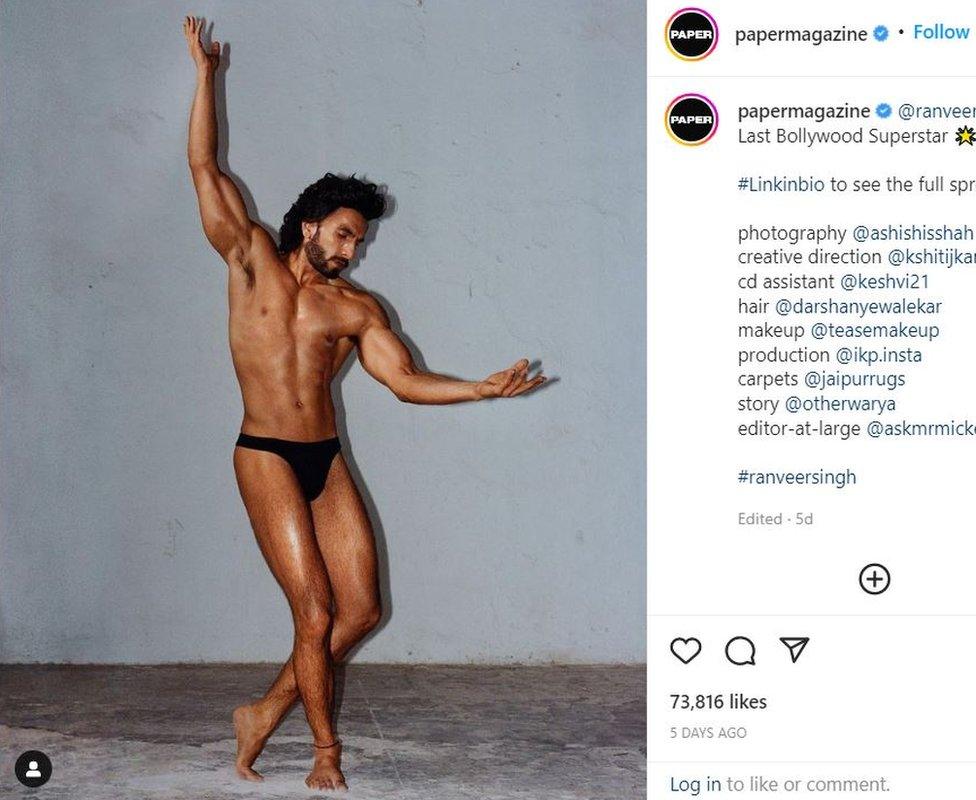
The differing reactions to Singh are illustrative of what some call India's "wild moral confusion", where people harbour a strange mix of conservative and liberal attitudes. The most graphic examples of erotic temple art can be found in many small-town shrines. One of the world's oldest textbooks of erotic love, Kama Sutra, is from India. Model and dancer Protima Bedi streaked on a Mumbai beach in 1974 for a film magazine cover. Nudity is not uncommon: thousands of ash-smeared Hindu holy men belonging to a cult turn up naked at religious festivals like the Kumbh Mela.
Instagram and TikTok are full of Indian men in "tiny posing trunks showcasing their bodies in erotically suggestive ways," says Michiel Baas, author of the book, Muscular India. "Some of them have tens of thousands to even more than a million followers. Some of their pictures may elicit lewd reactions but in general people respond to them with emoticons expressing wows, power and being impressed," he says. Also, most Bollywood stars have taken off their shirts for action scenes.
But, Baas says, when Indian men like Singh deviate from more standard and accepted ways of showcasing their bodies - he finds the star's pictures naked in a "vulnerable kind of way" with a hint of a 1970s aesthetic - it "often results in the kind of mocking that underscores how unusual it is for men to show their softer, perhaps more feminine side".
Some find the controversy futile. "I don't get this debate. Nangapan (nudity in Hindi) is not new to India. In Ranveer Singh's case: [it's] his body, his choice," says Shobhaa De, one of India's most popular writers.
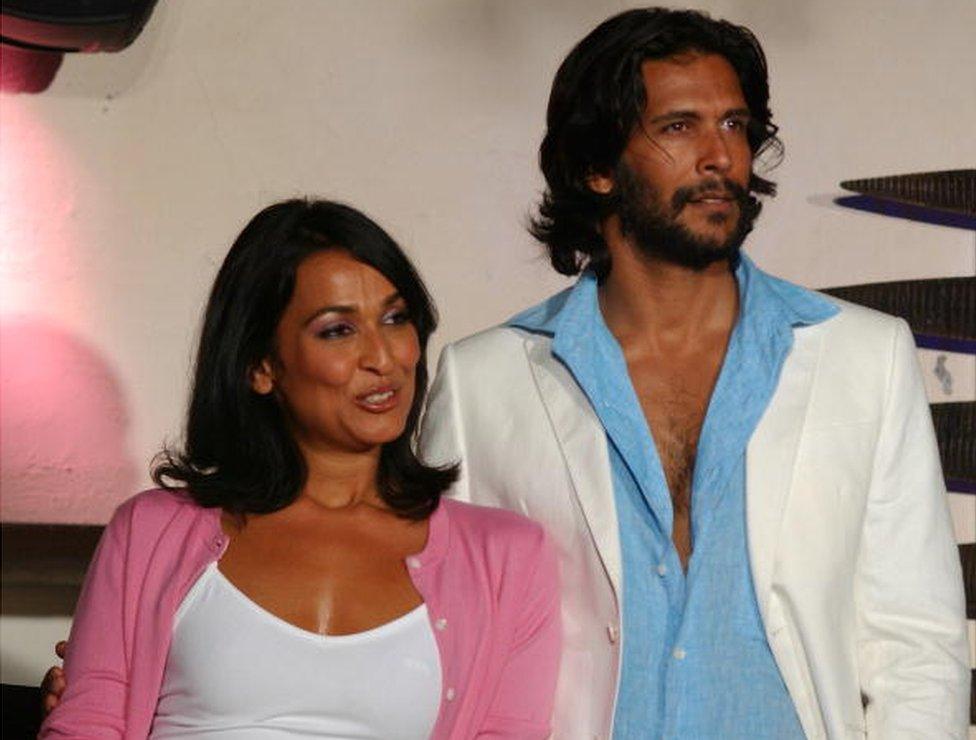
In 1995, Milind Soman (right) and Madhu Sapre posed in the nude for a shoe advert
Yet leading artists like MF Husain and Akbar Padamsee were attacked for paintings which depicted a naked deity and a man's hand on a woman's breast. Film sets and plays have been trashed for depicting nudity.
In fact, Singh is not even the first actor to pose in the buff. In 1995, Milind Soman and Madhu Sapre posed in the nude with a python wrapped around them for a shoe advert. A case of obscenity against the models crawled in the courts for 14 years. By the time the two were acquitted, "Sapre had left India, the shoe brand had folded up, and who knows what happened to the python", says Ambi Parameswaran, a brand strategist.
A Mumbai-based advertising standards watchdog continues to receive public complaints about obscene adverts. Last November it received two: one about women in "revealing undergarments" and the other was an "ugly ad... of two girls removing their T-shirts to show each other their lingerie". The watchdog swiftly dismissed both the complaints.
"There's more freedom and more confusion. Then there's the moral brigade who are queasy and curious at the same time. A wild moral confusion links us all," says Brinda Bose, author of The Audacity of Pleasure: Sexualities, Literature and Cinema in Contemporary India.
Two years ago, Chennai-based fashion photographer G Venket Ram found himself at the receiving end of this confusion. He shot a young woman tattoo artist in the nude as part of the body positivity movement, which calls for the acceptance of all shapes and sizes.
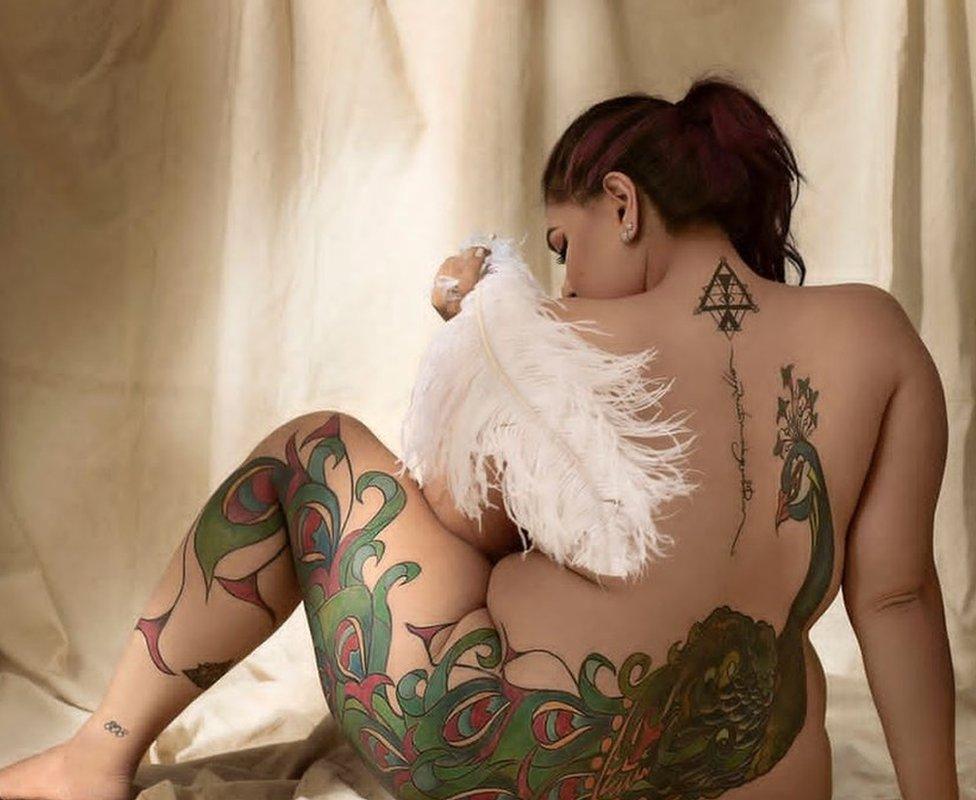
Venket Ram received a largely positive social media response to his picture of a young woman in the nude
He says he "gathered courage" and posted the picture on Instagram, where he has over 90,000 followers.
"Most people loved it. Others were not so happy. They said, we had respect for you, how did you do this?" says Ram.
Then something strange happened. He lost up to 2,500 followers and gained some 8,000 - all in less than a day.
"It was like a tsunami. Hordes of people followed and unfollowed me at the same time. More ended up following. Teenagers were raving about the shoot. It was a puzzling experience."
This year Ram shot a series called Bare with two models , and posted some of the images on Instagram. It was well-received and there was no trolling, he says. More female and male models are open to posing nude now as long as the pictures are aesthetically done, he says. Now he is planning to shoot men in the buff. "Social media allows you to express more freely than traditional media and advertising," he says.
Vinod Mehta, who edited the now-defunct Debonair magazine - India's answer to Playboy - once recalled a story which underlined India's attitudes towards nudity and sexuality.
During the Emergency, when press censorship was imposed, Mehta was summoned by a federal minister in Delhi asking to see the magazine's centre spread, which usually featured semi-naked women. Mehta showed him half a dozen pictures from which he planned to choose one.
"[The minister's] eye fell on one which was 90% nude. He kept it aside. I inquired if we should perhaps skip the centre spread. He was horrified. 'No', he said, just make it decent," Mehta recounted in his memoirs.
Then the minister kept the centre spread [picture] "without permission".
- Published6 August 2015
- Published1 July 2015
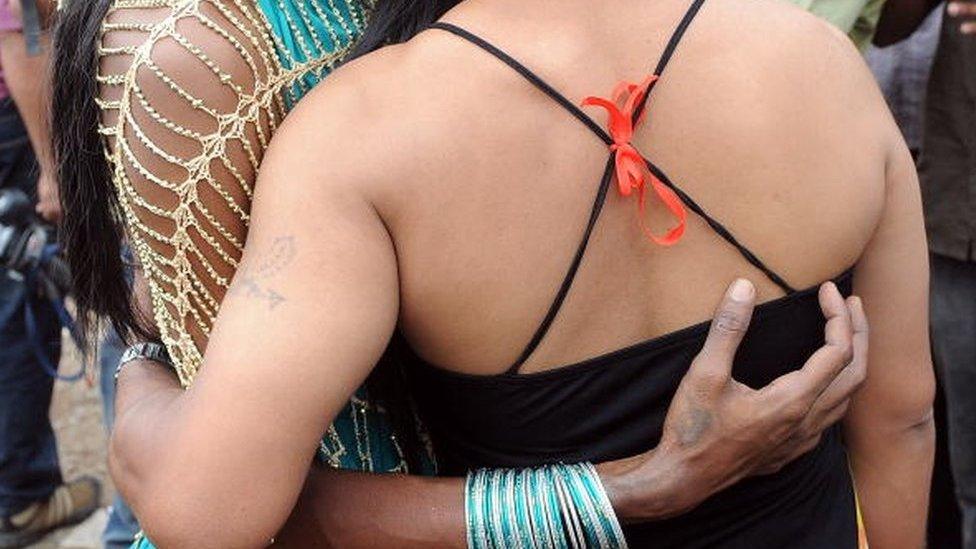
- Published17 June 2017

- Published18 April 2021

